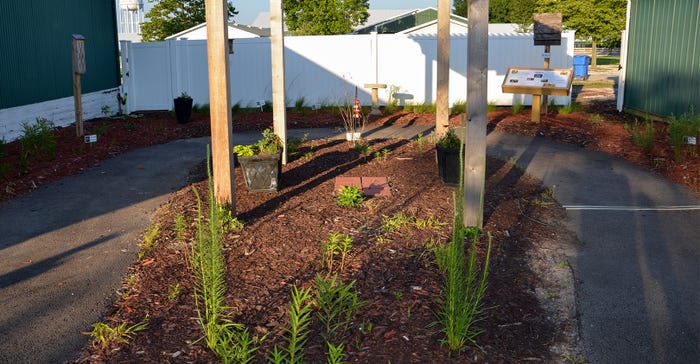
One of the SWCDs recognized for special effort at the Indiana Association of Soil and Water Conservation Districts annual meeting earlier this year was Jennings County. But that’s only part of the story. The district also recently received national recognition. What is this SWCD tucked away in south-central Indiana doing to make such a splash in conservation and natural resources circles?
It’s simple. In Jennings County, they’re not just talking about possible threats to pollinators and the need to increase their habitat — they’re also doing something about it. Primarily, the SWCD has unleashed a countywide blitz to get acres of pollinator plants planted in Jennings County. Andy Ertel, executive director of the Jennings County SWCD, looks at a field not being used and doesn’t just see an empty field — he sees a place that could grow pollinator habitat and support thousands of various types of bees. And in most cases, before Ertel and his staff are finished, the landowner who owns the field sees it, too. More often than not, the landowner eventually grows a variety of plants that attract pollinators, including honeybees.
“It’s not just about Andy and me and the supervisors,” says Kelly Kent, SWCD coordinator. “It’s about lots of Earth Team volunteers and volunteers from many different organizations who have helped us get plants and plots established in a variety of places.”
There are pollinator plots and fields on farms, at county parks and at schools, and more are planned for schools and farm fields. One of the more recent plots was established on a small piece of land between two buildings at the Jennings County Fairgrounds.
Fairgrounds project
“We established it last year and added to it this year,” Kent says. “The whole idea behind that one is to educate people who come through during the fair or at other times during the year as to what pollinator plots are all about.
“We have a variety of plants in the educational plot at the fairgrounds,” Kent continues. “We have signed them so that people can begin to realize what looks like a weed may actually serve a valuable purpose for bees and other pollinators. We also put signs on plots at our county parks. Some people were seeing the plants and thinking they were weeds. It’s an educational process.”
The fairgrounds display featured in the slideshow with this article is supported by various businesses and the Jennings County High School FFA. The FFA made raised beds for vegetables that are included in the space, and also constructed the large wooden signs that hold display boards explaining what the pollinator project is all about.
“We included the vegetable beds because we wanted people to make the connection that crop and food plants benefit from pollinators, too,” Kent says. “It’s all a labor of love. The exhibit at the fair is especially a labor of love, because we come here and work in it just so that we can hopefully educate other people about the value of thinking about the needs of pollinators.”
Check out the slideshow to learn more about the display.
About the Author(s)
You May Also Like




